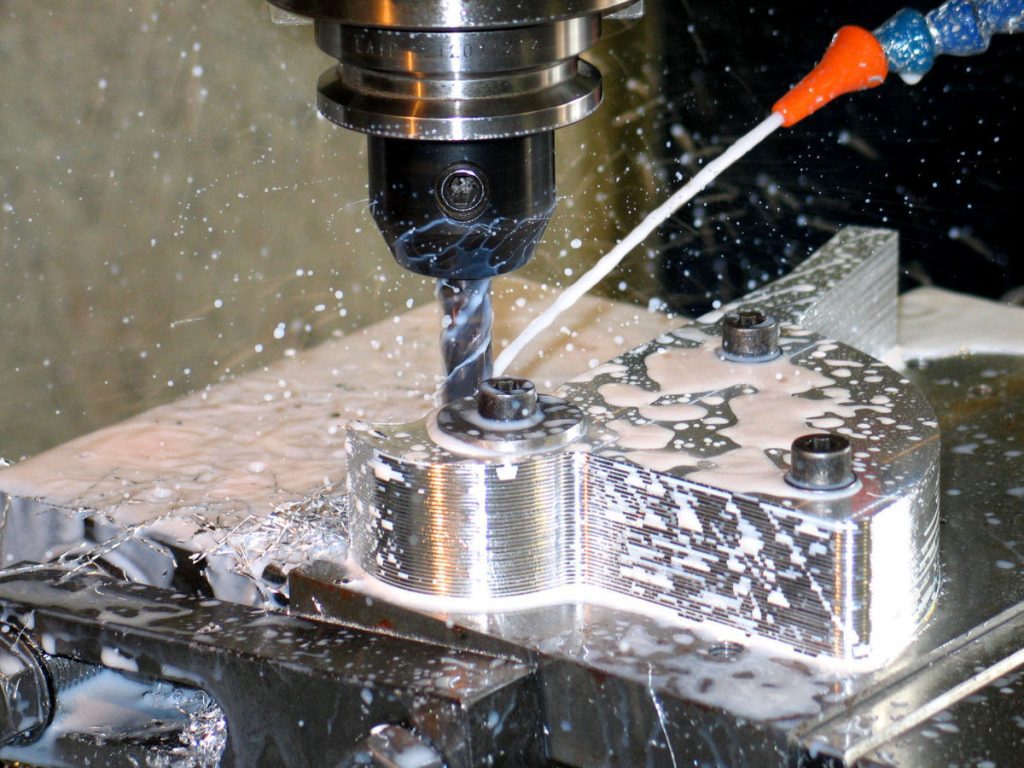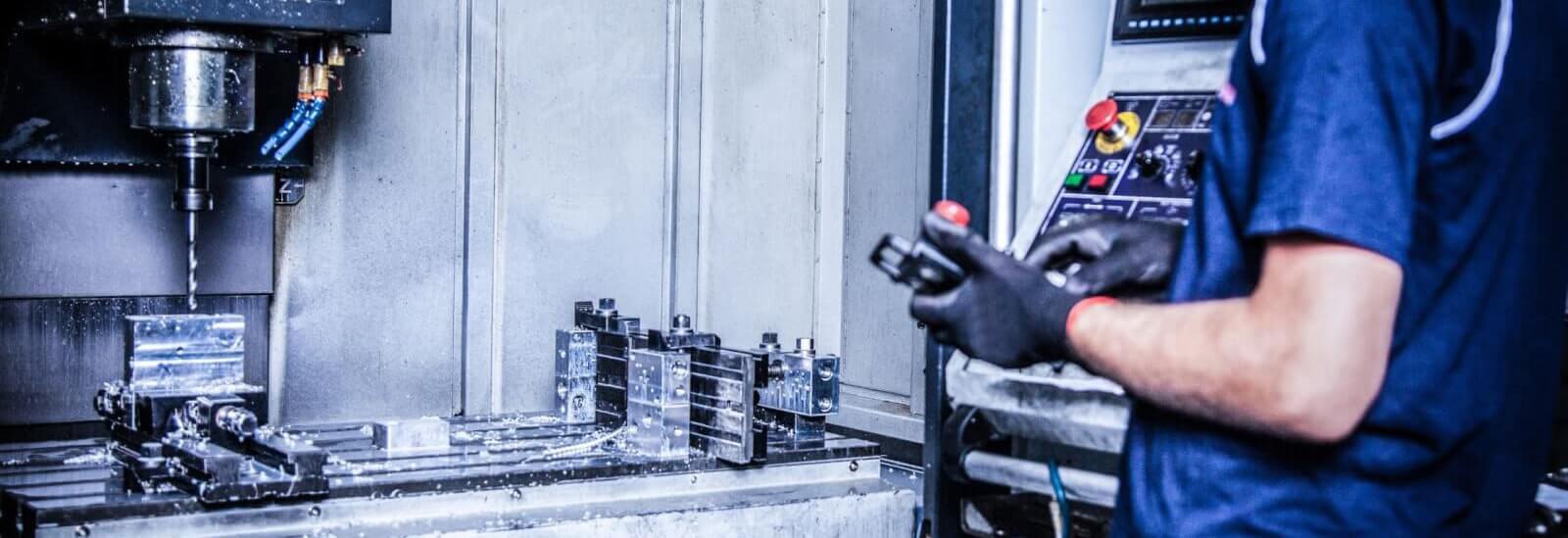Fasteners and Machining: Maximizing Style for Superior Production
Fasteners and Machining: Maximizing Style for Superior Production
Blog Article
Unveiling the Details of Fasteners and Machining Procedures for Ideal Performance
In the realm of design and manufacturing, the option of fasteners and the intricacies of machining procedures play a critical duty in figuring out the supreme efficiency and sturdiness of a product. From the relatively simple job of selecting the right sort of fastener to the complex accuracy machining methods employed, every action in this process needs meticulous focus to information. As we start this exploration right into the world of bolts and machining, we will uncover the refined yet vital factors that can dramatically influence the effectiveness and top quality of the final item, dropping light on the frequently overlooked elements that can make all the difference in accomplishing ideal performance.

Relevance of Correct Bolt Option
Choosing the proper bolts is vital in making sure the architectural stability and durability of any mechanical assembly. Bolts play an essential role in holding parts together securely, with the appropriate option contributing significantly to the total performance and integrity of the setting up. When choosing bolts, elements such as product compatibility, ecological conditions, load-bearing ability, and ease of installment need to be thoroughly considered to ensure optimal efficiency.
Improper bolt choice can bring about a variety of issues, consisting of loosening, deterioration, and even architectural failure. Making use of fasteners that are not matched to the certain requirements of the assembly can endanger its performance and pose safety and security dangers. For that reason, developers and designers should diligently examine the application needs and choose bolts that meet or go beyond the necessary criteria and specs.
Additionally, the proper fastener option process entails evaluating the joint layout, expected tons, vibration levels, and possible thermal development or contraction to guarantee that the picked bolts can stand up to the operating conditions effectively. By focusing on correct bolt choice, suppliers can boost the quality, sturdiness, and efficiency of their mechanical settings up.
Types and Attributes of Bolts
An essential aspect of mechanical assemblies hinges on understanding the varied kinds and one-of-a-kind characteristics of bolts made use of in numerous commercial applications. Bolts are vital elements that hold structures together, making sure stability and functionality. There is a wide variety of fasteners available, each developed for particular purposes based upon the application needs. Typical kinds of fasteners include screws, screws, nuts, washers, pins, and rivets.
Screws are threaded fasteners that are typically used to join two or even more parts with each other. Bolts resemble screws yet are commonly utilized with a nut to create a safe and secure joint. Nuts are internally threaded bolts that mate with bolts to hold parts together. Washing machines are thin plates that disperse the tons of a bolt, stopping damage to the product being fastened. Rivets are irreversible bolts that are hammered or pressed right into place. Pins are utilized for alignment or to protect components briefly.
Understanding the qualities of each kind of bolt is necessary for picking the right one for a particular application, guaranteeing ideal performance and dependability of the mechanical assembly. Fasteners and Machining.
Precision Machining Methods for Effectiveness
The complex design needs of various bolts require employing precision machining strategies for ideal performance in making procedures. One of the main methods utilized in accuracy machining is Computer system Numerical Control (CNC) machining, which allows high degrees of precision and repeatability in the manufacturing of fasteners.
Along with CNC machining, other precision techniques such as grinding, milling, and transforming are generally utilized to accomplish the limited resistances required for bolts. These techniques enable suppliers to create bolts with smooth surface areas, accurate measurements, and high architectural integrity. By using accuracy machining techniques, producers can boost the quality of fasteners, minimize product waste, and improve overall manufacturing performance. The usage look at here of advanced machining processes helps guarantee that bolts fulfill sector criteria and consumer expectations for performance and reliability.

Aspects Influencing Machining Refine Performance
Numerous variables play a considerable role in establishing the performance of machining procedures in the production of fasteners. The first essential aspect is the choice of reducing tools. Choosing the proper tools based upon the product being machined, desired surface, and reducing rates can greatly affect the effectiveness and quality of the machining process. Furthermore, the reducing parameters such as cutting rate, feed price, and deepness of cut are necessary variables that affect performance. Fasteners and Machining. Maximizing these parameters based on the certain needs of the fastener being produced is crucial to attaining cost-effective and accurate machining.
Maker rigidness and security also play an site here essential duty in figuring out machining process efficiency. A well-informed operator can make real-time changes, troubleshoot problems successfully, and ensure that the machining procedure runs smoothly, inevitably impacting the last high quality of the bolt.

Quality Assurance Actions in Production
Variables affecting machining procedure efficiency, such as cutting tool selection and device stability, directly impact the implementation of quality control actions in production. Quality assurance procedures are necessary in making sure that items satisfy the required specifications and criteria. In the manufacturing process, numerous strategies are utilized to maintain quality criteria. Assessment and testing play an essential role in recognizing any type of discrepancies from the desired outcome. Normal maintenance of machining equipment is additionally crucial to support quality assurance. Calibration of machines and devices is needed to guarantee accurate and specific production processes. In addition, carrying out standardized operating treatments and protocols can aid in preserving consistency and top quality throughout the assembly line. Quality control gauges not only concentrate on the end item but additionally on every stage of the manufacturing procedure to avoid flaws and errors. By sticking to stringent quality assurance steps, suppliers can improve consumer fulfillment, build a track record for integrity, and eventually attain optimal performance in their machining procedures.
Verdict
To conclude, choosing the ideal bolts and utilizing precision machining methods are crucial for optimal performance in producing procedures. Recognizing the kinds and characteristics of fasteners, together with aspects affecting machining procedure efficiency, can bring about improved efficiency and quality assurance steps. By focusing on these ins and outs, makers can accomplish greater levels of performance and reliability in their products.
In the world of design and production, the choice of fasteners and the complexities of machining processes play a critical role in determining the supreme efficiency and durability of an item (Fasteners and Machining). One of the key methods used in precision machining is Computer system Numerical Control (CNC) machining, which makes it possible for high degrees of precision and repeatability in the manufacturing of fasteners. The use of innovative machining procedures assists guarantee that fasteners fulfill sector criteria and client assumptions for performance and integrity
In final thought, choosing the right bolts and utilizing precision machining techniques are essential for optimal efficiency in producing processes. Recognizing the kinds and you could check here attributes of fasteners, along with aspects affecting machining process efficiency, can lead to improved efficiency and high quality control procedures.
Report this page